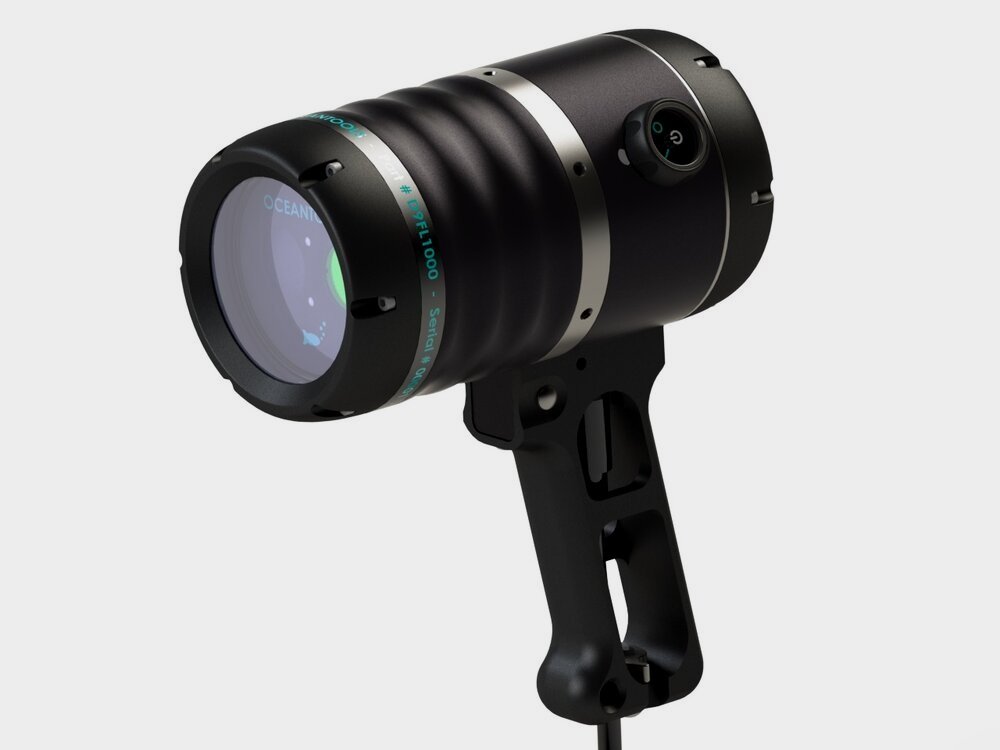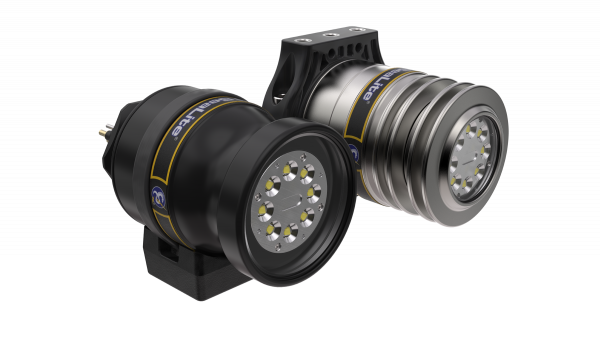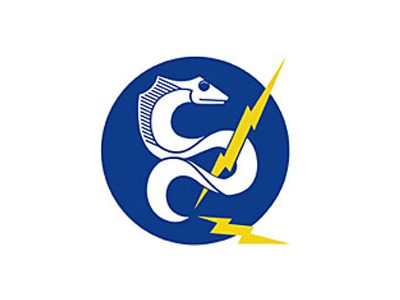BlueZone partners with over 50
world-leading original equipment
manufacturers and systems providers
D9 DyeTector
Diver held subsea dye detection system
OceanTools DyeTector is a state of the art subsea leak and dye detector. High-power LED light is focused through lenses and filters to create a concentrated beam that is tuned to a specific wavelength to cause maximum fluorescence of the dye. Detection electronics employ clever light amplification technology to amplify even the smallest amounts of fluorescence from the agitated dye molecules.
The diver held D9 DyeTector is a self-contained unit featuring ruggedised single switch operation, a built-in detection display and a depth rating in excess of 250m. The unit is ideally balanced with centre of gravity at the front face of its ergonomic handle. It can be powered using an external portable battery pack via a tidy cable that exits from the end of the handle near the operator’s wrist.
The D9 DyeTector uses the same technology capable of detecting single photons of light as the single channel D7 DyeTector, which enables it to detect down to single digit parts per billion of dye dissolved in water. This makes it ideal for detecting the very smallest of leaks or dye dosed cement.
Key Features:
-
Rhodamine, Fluorescein or Ultraviolet dye detection
-
Focused beam and filtered high intensity LEDs
-
Light amplification and photon detection technology
-
Diver operated with 250m+ standard depth rating
Subsea infrastructure
A DyeTector may be used to detect leaks from subsea infrastructure such as manifolds, wellheads or pipelines if a suitable dye has been added to the infrastructure fluids. Pipeline or flow line pressure testing can be monitored by the DyeTector if dye impregnated fluids are used.
Cement detection
A DyeTector may also be used during casing cementing operations to detect cement returns if a tracer dye is added to either the seawater spacer or to the cement itself. Unlike pH meters which rely upon the cement passing over them, a DyeTector can detect cement from a distance of several metres depending on the concentration of dye.
Detection dyes
Versions of the DyeTector are designed to detect several types of dye or fluid in addition to C-Dye 530 (Rhodamine) and C-Dye 370 (Ultraviolet) including:
-
Rhodamine dyes such as B275, RX9022, Pelagic 100 Pink
-
Fluorescein dyes such as HW443, HW540P, Oceanic Yellow LTF
-
Ultraviolet dyes such as RX9026E, Pelagic 100, Champion Cleardye, Castrol HT2
List of Detectable Dyes and Fluids
For more information about OceanTools D9 DyeTector, Contact the team at BlueZone.
Key Features
Up to 25-hour mission duration
Speeds up to 4.2 knots
Increased module payload capacity
Search and recovery
Hydrography
Deep sea mineral exploration
Marine & Fisheries research
Product Enquiry
Related products
DeepSea Power & Light's LED SeaLite meets the demands for the market challenges of today. This subsea light emits up to 10,000 lumens and is available in multiple LED, beam...
Read moreDeepSea's SeaLaser 100 is ideal for underwater scaling, aiming, and range finding. Both green and red color options utilize a 532 nm (green) or 635 nm (red) <5mW semiconductor laser...
Read moreBlueZone Group has supplied DeepSea Power & Light products to many projects in the Offshore Oil and Gas, Oceanographic and ROV markets. DeepSea Power & Light was founded in 1983...
Read moreRelated Articles
Ahead of the Tide: A Year of Milestones and Momentum- A Letter from the Director
By Neil Hodges, Managing Director, BlueZone Group As 2025 draws to a close, it’s a moment to reflect on a year that has been nothing short of transformative for...
Read MoreGlobal Journeys, Fresh Faces and Capability Growth That Sets the Stage for the Future For BlueZone Group, 2025 has been nothing short of transformative — a year defined by...
Read MoreSafer Summers: Innovation Beneath the Waves with ArtemisSAR and StarFish
The Advanced Sonar Systems Giving Surf Life Savers the Tools to Protect Lives with Greater Speed, Safety, and Confidence As we turn the page into Aussie summer, the rhythm...
Read More



